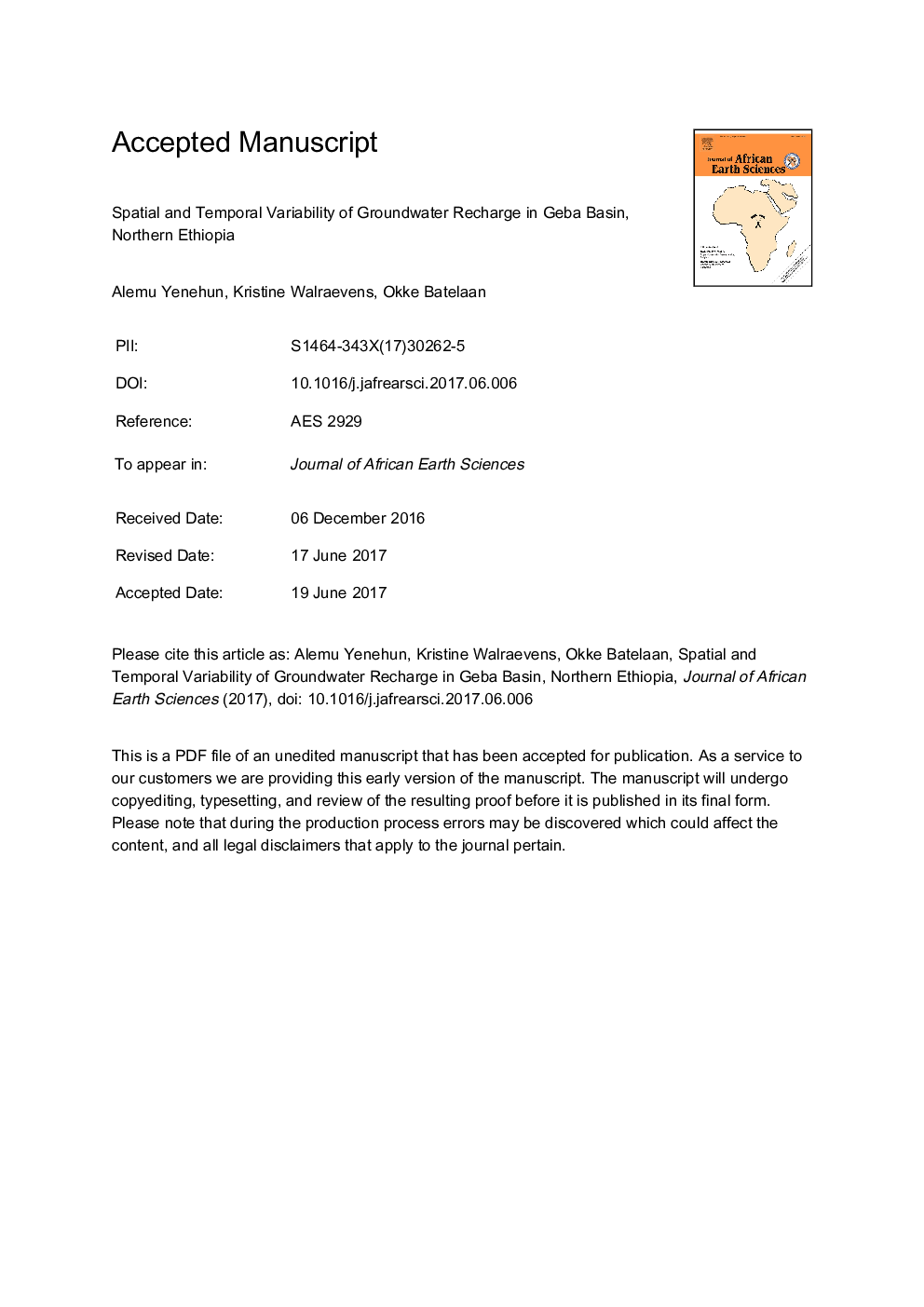| Article ID | Journal | Published Year | Pages | File Type |
|---|---|---|---|---|
| 5785551 | Journal of African Earth Sciences | 2017 | 52 Pages |
Abstract
WetSpa, a physically based, spatially distributed watershed model, has been used to study the spatial and temporal variation of recharge in the Geba basin, Northern Ethiopia. The model covers an area of about 4, 249 km2 and integrates elevation, soil and land-use data, hydrometeorological and river discharge data. The Geba basin has a highly variable topography ranging from 1000 to 3280 m with an average slope of 12.9%. The area is characterized by a distinct wet and long dry season with a mean annual precipitation of 681 mm and temperatures ranging between 6.5 °C and 32 °C. The model was simulated on daily basis for nearly four years (January 1, 2000 to December 18, 2003). It resulted in a good agreement between measured and simulated streamflow hydrographs with Nash-Sutcliffe efficiency of almost 70% and 85% for, respectively, the calibration and validation. The water balance terms show very strong spatial and temporal variability, about 3.8% of the total precipitation is intercepted by the plant canopy; 87.5% infiltrates into the soil (of which 13% percolates, 2.7% flows laterally off and 84.2% evapotranspired from the root zone), and 7.2% is surface runoff. The mean annual recharge varies from about 45 mm (2003) to 208 mm (2001), with average of 98.6 mm/yr. On monthly basis, August has the maximum (73 mm) and December the lowest (0.1 mm) recharge. The mean annual groundwater recharge spatially varies from 0 to 371 mm; mainly controlled by the distribution of rainfall amount, followed by soil and land-use, and to a certain extent, slope. About 21% of Geba has a recharge larger than 120 mm and 1% less than 5 mm.
Related Topics
Physical Sciences and Engineering
Earth and Planetary Sciences
Geology
Authors
Alemu Yenehun, Kristine Walraevens, Okke Batelaan,
